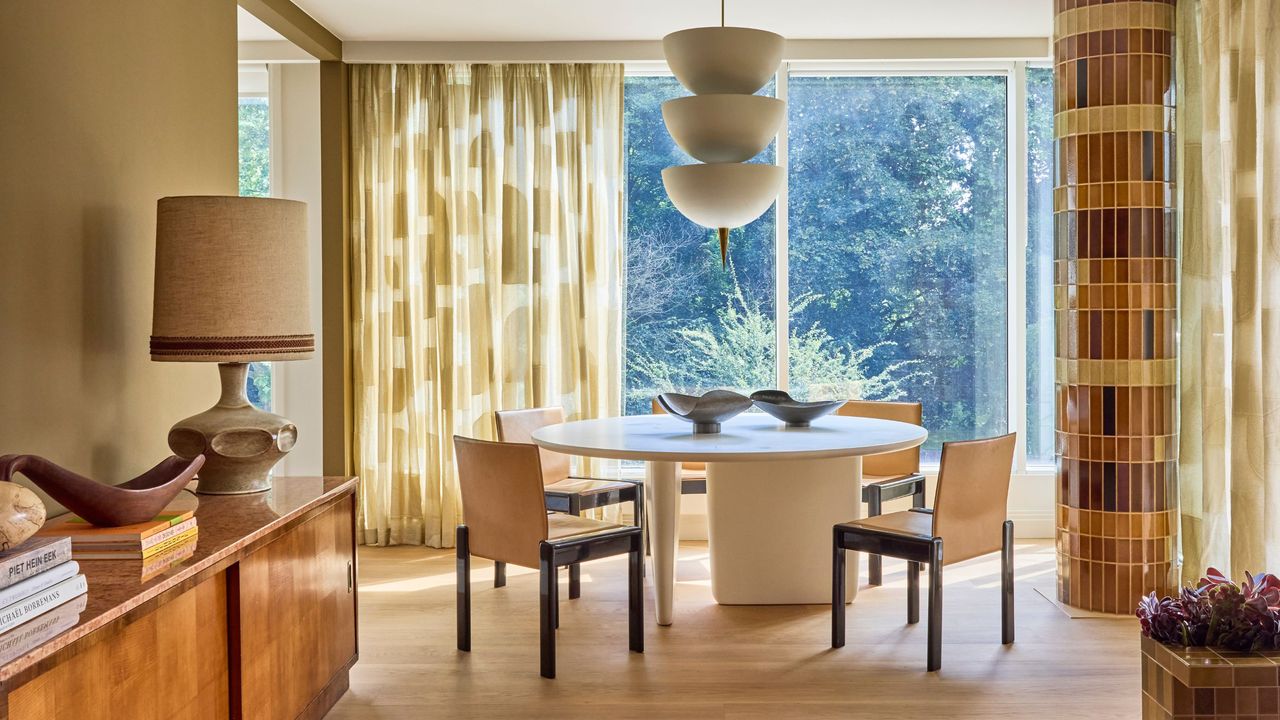
While most of us bemoan the boring 'white' box, others are out there dealing with much bigger inconveniences in their interiors: structural columns. Yes, they're difficult to live with, but in most cases, impossible to live without (literally), so it's worth finding ways to see them as a feature rather than a flaw in your home.
So, how do you cover, conceal, dress, or disguise structural columns imposing on your modern living room? Or wherever they fall. In most cases, it's about making them feel intentional — like a considered design element you chose to include, rather than one you couldn't remove.
"Whether it’s wrap-around seating, integrated shelving for books and objects, or even becoming part of a bespoke desk, it’s all about thinking creatively to transform a constraint into a standout element of the space," says Karl Openshaw, creative director of BAYA Interiors.
Below are five ingenious examples of designers who've done the seemingly impossible, making structural columns the star of the show, rather than just a supporting role. (Ba-doom-cha.)
1. Dress It in Faux Flowers
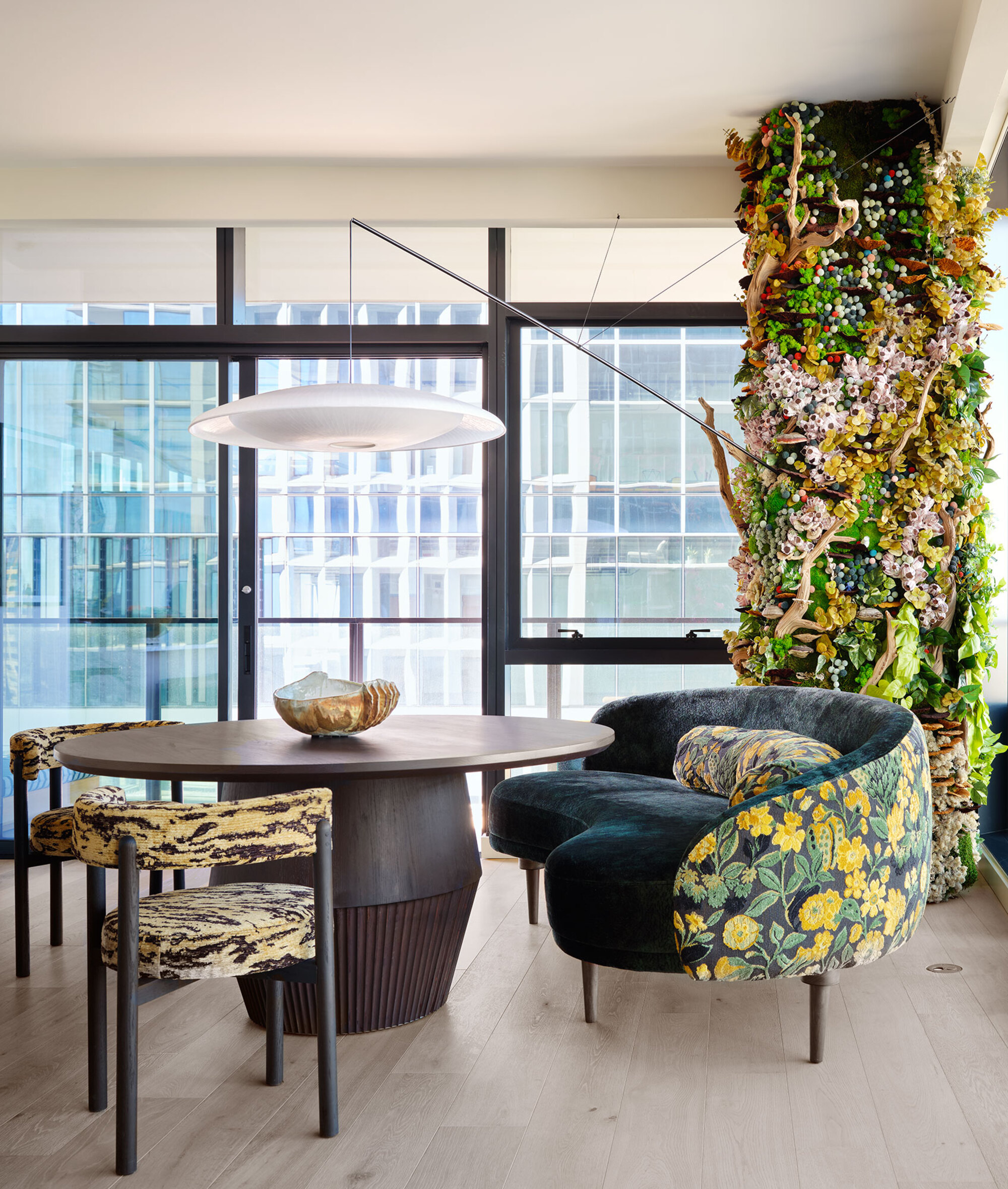
It seems counterintuitive, but sometimes the best way to detract from a structural column is to draw attention to it — perhaps even by decorating with flowers.
"The homeowner was passionate about transforming the prominent concrete column in his high-rise condo into a striking focal point," explains Michele Lorenz, principal at Ashby Collective. "We conceived a sculptural installation that blends freeze-dried florals, barnacles, driftwood, and other organic elements — turning an architectural challenge into a captivating work of art."
It'll take a few, but you could recreate this look with plenty of faux flowers.
2. Wrap It in Timber
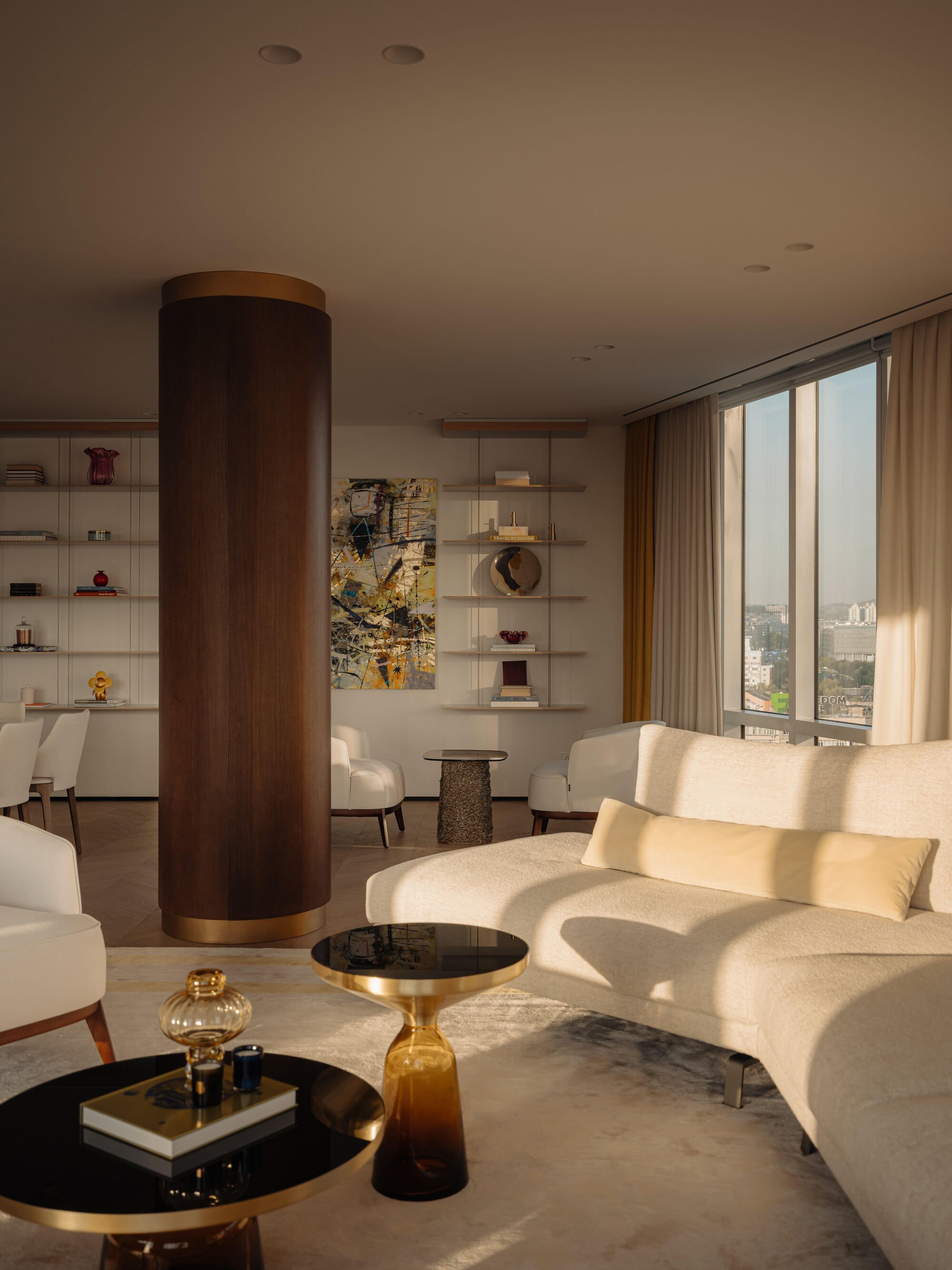
One of the biggest challenges with columns is that they often block sightlines and obstruct the flow of a space. But when it comes to hiding pillars, sometimes it's best to lean into it and let them guide the layout.
"Rather than concealing the existing structural columns, we chose to celebrate them as integral design elements, cladding them in warm timber with refined brass accents," explains interior designer Aizhana Kunayeva, founder of AKKA Interiors, of the room shown above.
"The columns now serve as visual anchors that gently define zones within the open-plan layout — creating distinct areas for living, dining, and reading while preserving spatial flow and continuity," she adds. "Their rounded forms introduce sculptural softness, while the brass detailing echoes metallic elements found throughout the interior."
3. Give It a Purpose
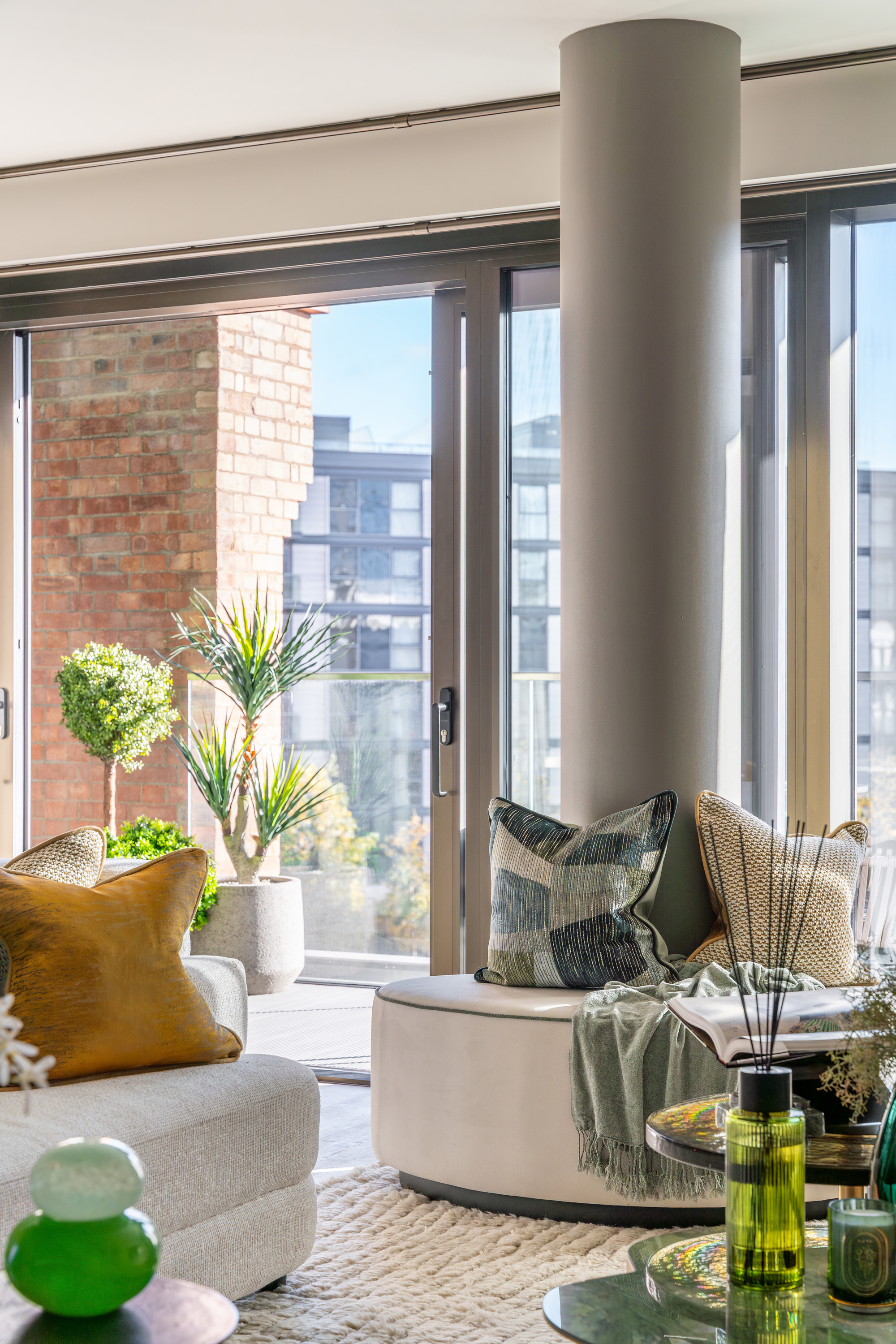
As a former power station, the project shown above presented plenty of unconventional architectural challenges for the BAYA Interiors team, including a prominent column positioned directly in front of a full-height window. But instead of trying to conceal or work around it, the team designed a bespoke wrap-around bench to soften its presence and make it feel intentional.
"The column shifted from obstacle to anchor," explains Karl Openshaw, creative director of BAYA Interiors. "It became part of the room’s rhythm, providing additional seating and contributing to the overall spatial flow without dominating it."
You can easily soften a bench seat with plenty of cushions, like this expensive-looking throw pillow.
4. Cover It in Colorful Tiles
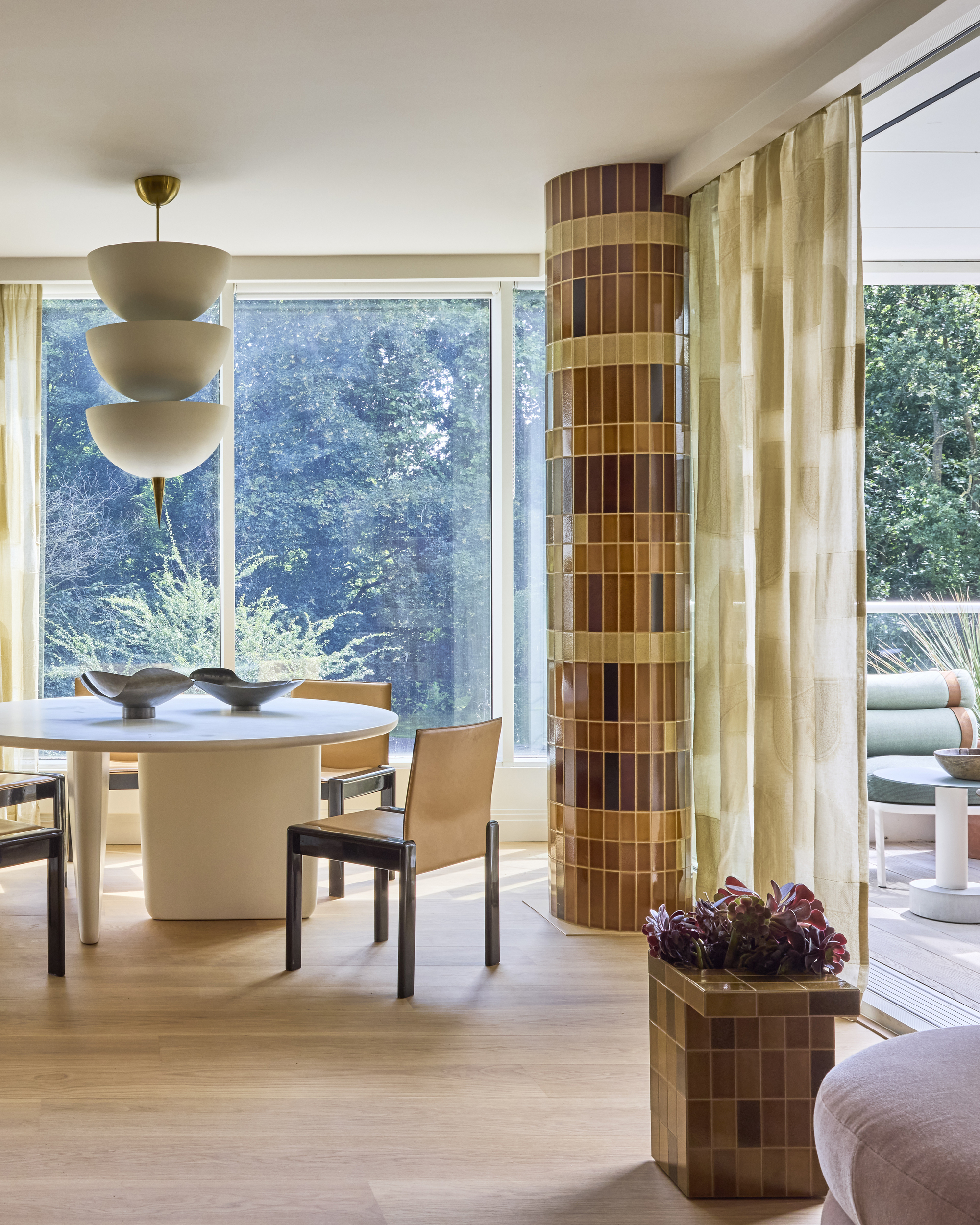
And lastly, you could easily 'hide' a pillar or structural column by turning it into a striking tiled feature, as seen in the dining room above by Maddux Creative. Rather than an eyesore in the space, it becomes a focal point — an 'oh wow'.
For this, glossy Zellige tiles work particularly well, as they reflect the different angles of light on the curved surface, adding further depth to the design. As the light shifts throughout the day, it will bounce off the column, giving the space a sense of life and movement.
When it comes to decorating with tiles on a curved surface, you're going to want to be quite selective with the shape you choose. A tall, skinny option like the one chosen by Maddux Creative will ensure the bend looks as smooth as possible. Other than that, get creative.
These beautiful glossy wall tiles come in a range of colors, and could be laid just like the ones above.
Though often seen as limiting, structural challenges are often what lead to the best design. Whether it's working out an awkward kitchen layout, building around beams, or hiding a pillar, they force you to think outside the box, come up with creative solutions, and can result in striking statements you'd never have otherwise considered.
"There’s something powerful about leaning into these so-called limitations," says Karl Openshaw. "With the right treatment, architectural constraints can become opportunities for storytelling."







